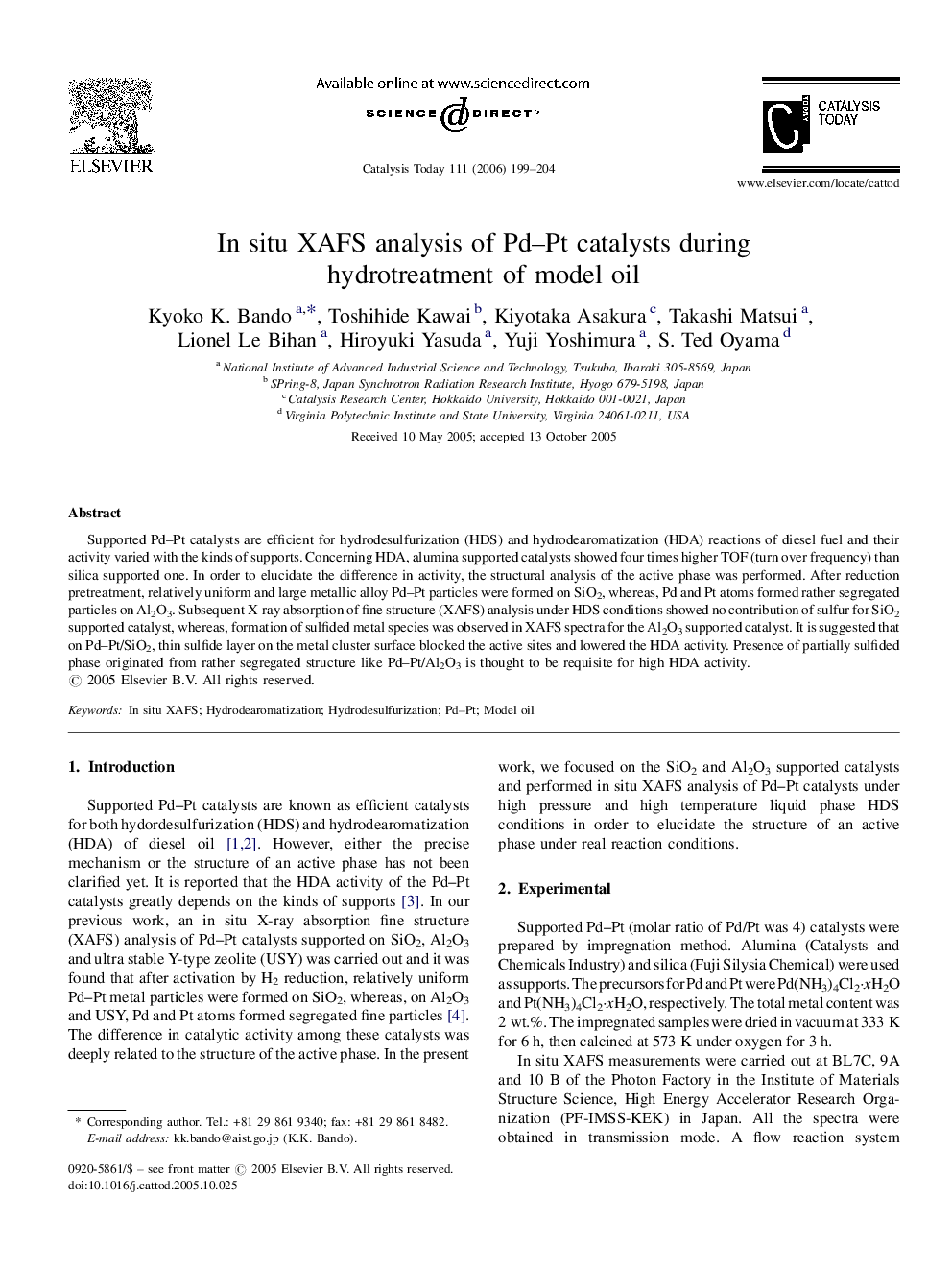| Article ID | Journal | Published Year | Pages | File Type |
|---|---|---|---|---|
| 58607 | Catalysis Today | 2006 | 6 Pages |
Supported Pd–Pt catalysts are efficient for hydrodesulfurization (HDS) and hydrodearomatization (HDA) reactions of diesel fuel and their activity varied with the kinds of supports. Concerning HDA, alumina supported catalysts showed four times higher TOF (turn over frequency) than silica supported one. In order to elucidate the difference in activity, the structural analysis of the active phase was performed. After reduction pretreatment, relatively uniform and large metallic alloy Pd–Pt particles were formed on SiO2, whereas, Pd and Pt atoms formed rather segregated particles on Al2O3. Subsequent X-ray absorption of fine structure (XAFS) analysis under HDS conditions showed no contribution of sulfur for SiO2 supported catalyst, whereas, formation of sulfided metal species was observed in XAFS spectra for the Al2O3 supported catalyst. It is suggested that on Pd–Pt/SiO2, thin sulfide layer on the metal cluster surface blocked the active sites and lowered the HDA activity. Presence of partially sulfided phase originated from rather segregated structure like Pd–Pt/Al2O3 is thought to be requisite for high HDA activity.
